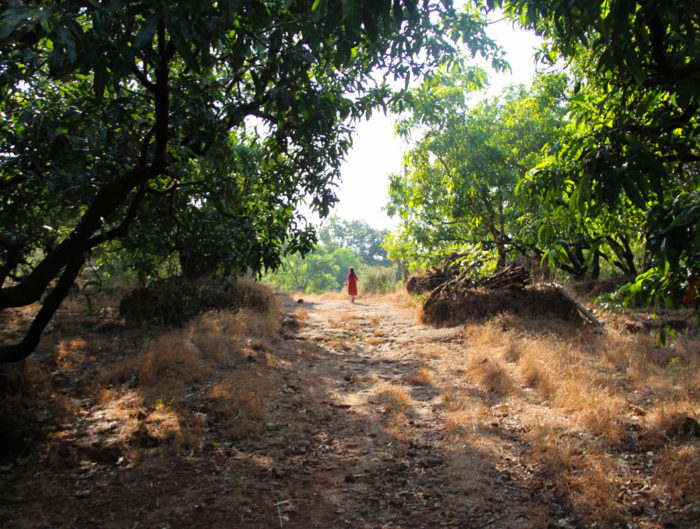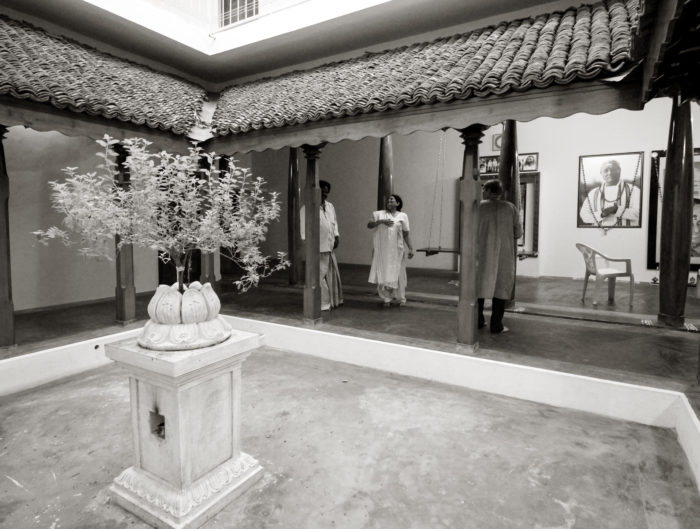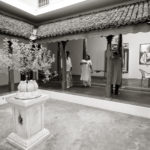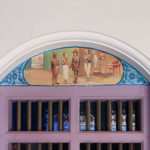As we stepped out of the Maharana Pratap museum in Haldighati, the Sun was about to set over Udaipur. The sky had turned a flaming Saffron. On a sunset like this, Rani Padmini had set herself ablaze, a long time ago in the name of honor.
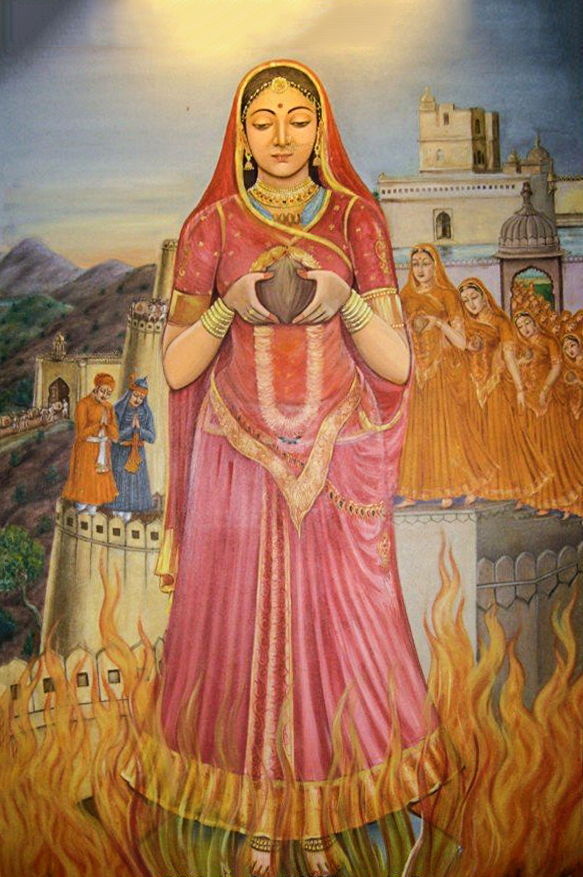
Padmini-jauhar
The gallery of portraits in the Maharana Pratap museum houses a mystical painting of Rani Padmini. Perfect in symmetry, Padmini stands in submission with a coconut and flower garland in her hands. Saffron flames are starting to lick her feet and red robes. Instead of pain, you can sense eternal peace exuberating from her somber eyes. I was transfixed even though the painting is not an artistic masterpiece.
No part of me standing in front of that painting in the 21st century could comprehend this act of bravery or the thought process that had prompted the decision.
Centuries ago Rani Padmini and thousands of women of Chittor had committed Jauhar – a practice of self-immolation preferred over the dishonor of falling into the hands of their Islamic enemy due to an imminent defeat. All men, including the king Rana Rantan Singh walked the Saka ritual the next dawn, riding out to their own destruction in front of an enemy that was clearly too large.
A glorious yellow of blooming mustard now covers the fields that were once bloody battlegrounds in the Mewar region of Rajasthan. The drive from Udaipur to Chittor on NH27 takes only 2 hours and is by far the greenest stretch you will encounter in the desert state.
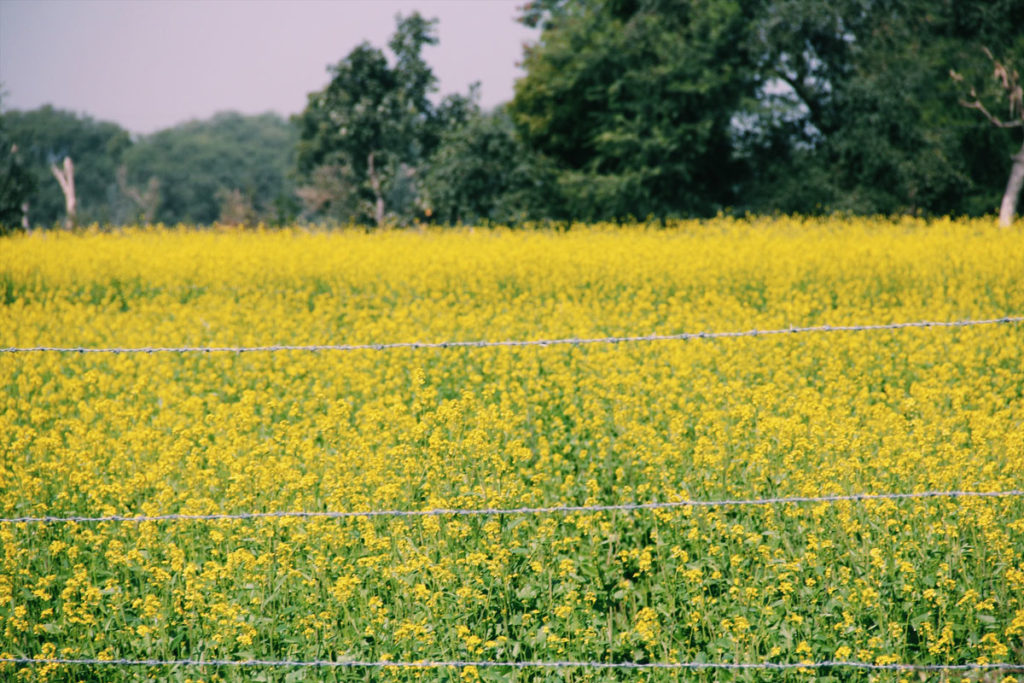
Mustard growing along the way from Udaipur to Chittorgarh
Inside the Chittorgarh fortress, you will see locals selling handicrafts and books that narrate the stories of Chittor’s legendary characters – Meerabai, Maharana Pratap, Gora – Badal, Rani Karnavati and of course Rani Padmini. I quickly purchased a Radha-Krishna miniature style painting on marble from a compelling seller and as I waited to receive the change, I casually flipped through a small book.
“Rani Padmini was the most beautiful queen ever. Her skin was so fair, that if she had ‘Paan’, you could see the red beetle leaf juice going down her throat.”
Undeniably, Padmini is the most riveting of Chittorgarh’s historical characters. For centuries the story of her beauty and her willingness to die for her values has inspired many. It is local lore that every child in Chittorgarh learns to respect as the gospel truth from an early age. The story is repeated by priests whose families have served the temples for generations, and by guides to the spellbound tourists. Whoever comes to Chittorgarh comes in search of Padmini.
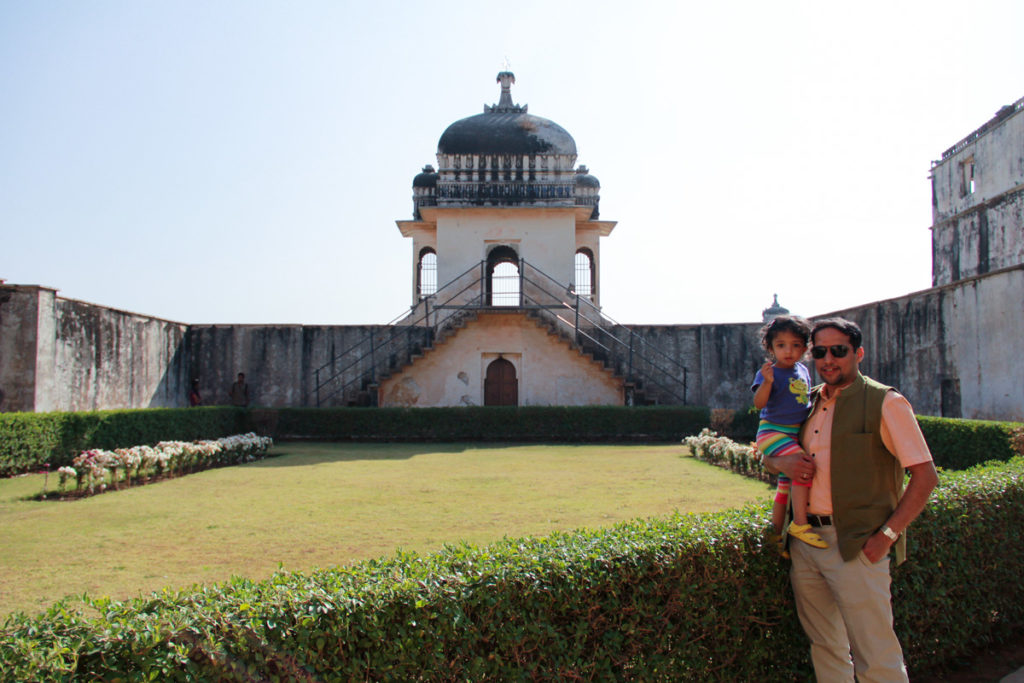
Chhatri – Pavilion at Padmini Palace
Sightseeing in the order in which events around a place have occurred creates a good narration. We started at the Padmini Palace with its pavilions, garden, water moat and the Jal Mahal that stands in the Padmini lake. The once beautiful, although small structure, is now in an advanced state of disrepair.
While the palace may have once been stately, it is hard to believe the modest structure was as lavish as its interpretations on screen.
The Jal Mahal appears to be poetically floating over the water and even though unadorned, evokes a sense of elegance. The palace stands as the only feminine structure surrounded by the masculine garrison of Chittorgarh.
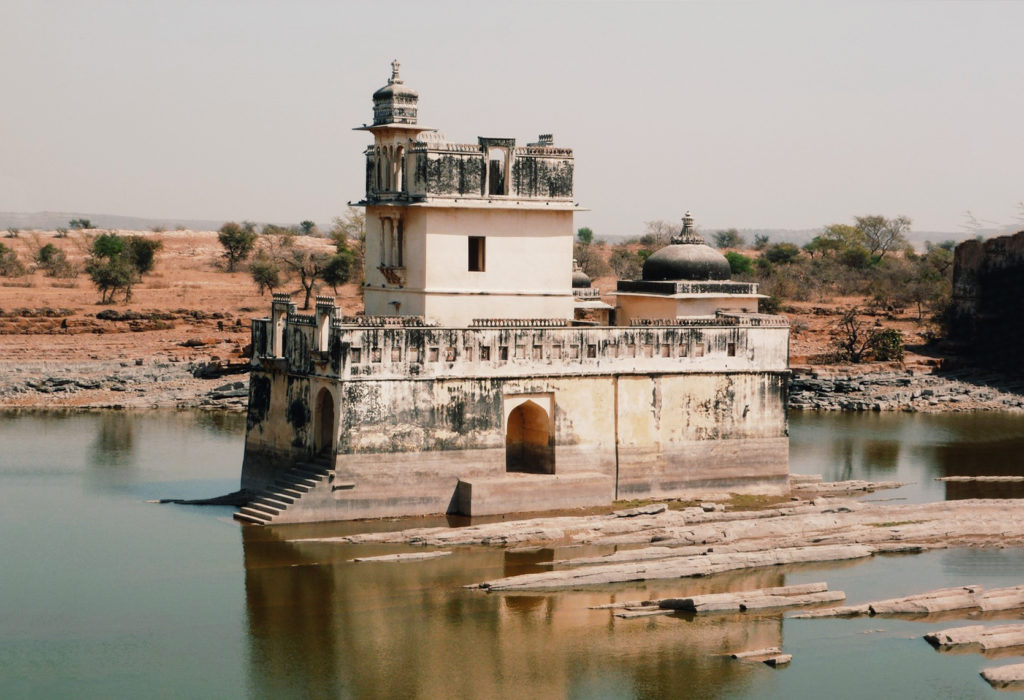
Jal Mahal
It is believed that Padmini Palace is the place where Rana Ratan Singh allowed Allaudin Khilji, the Sultan of Delhi, a glimpse of the sublime beauty of his wife, Padmini. Lustfully driven, Allaudin Khilji later went to the extent of destroying Chittor in order to possess Padmini.
It is said that Khilji had seen Padmini’s reflection in the mirror that hangs here. According to our guide, Jawaharlal Nehru installed the mirror to support his narration in the book ‘The Discovery of India’. The mirror looks rather modern.
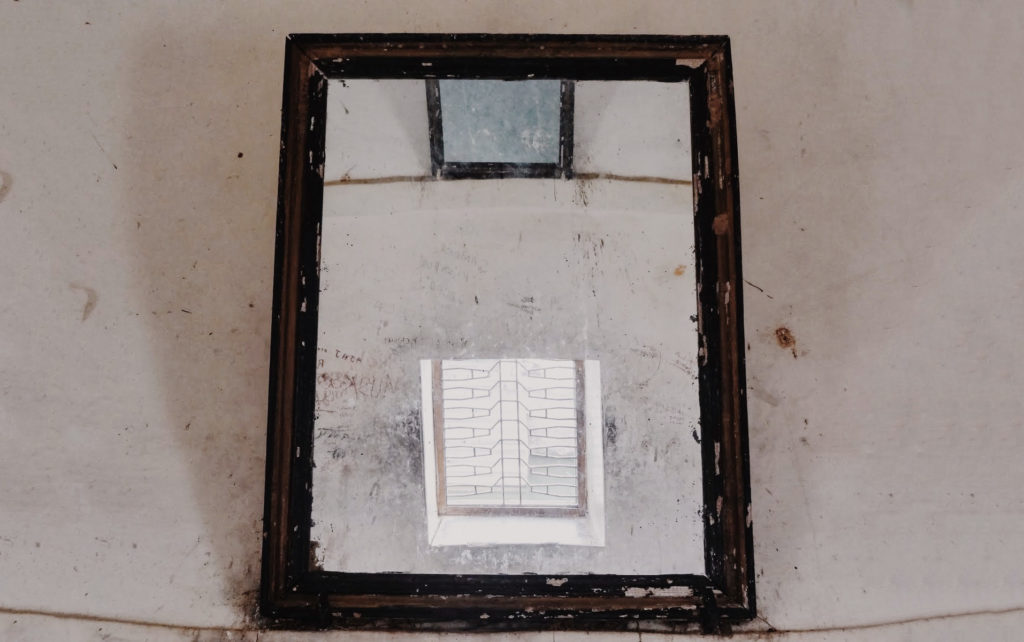
The mirror in which it is believed that Khilji saw Padmini’s reflection.
Historical evidence claims that Khilji attacked Chittor and thousands of women performed Jahaur, but Padmini was not the reason Khilji attacked. The reasons were politically related to the cause of territorial expansion and not lustful.
Khilji had orchestrated a highly successful campaign of annexing Hindu kingdoms across the North and down the Indian peninsula.
Destruction of temples and persecution of Hindus, particularly by dishonoring and enslaving women, were common exploits of war.
Our next stop was at the fort.
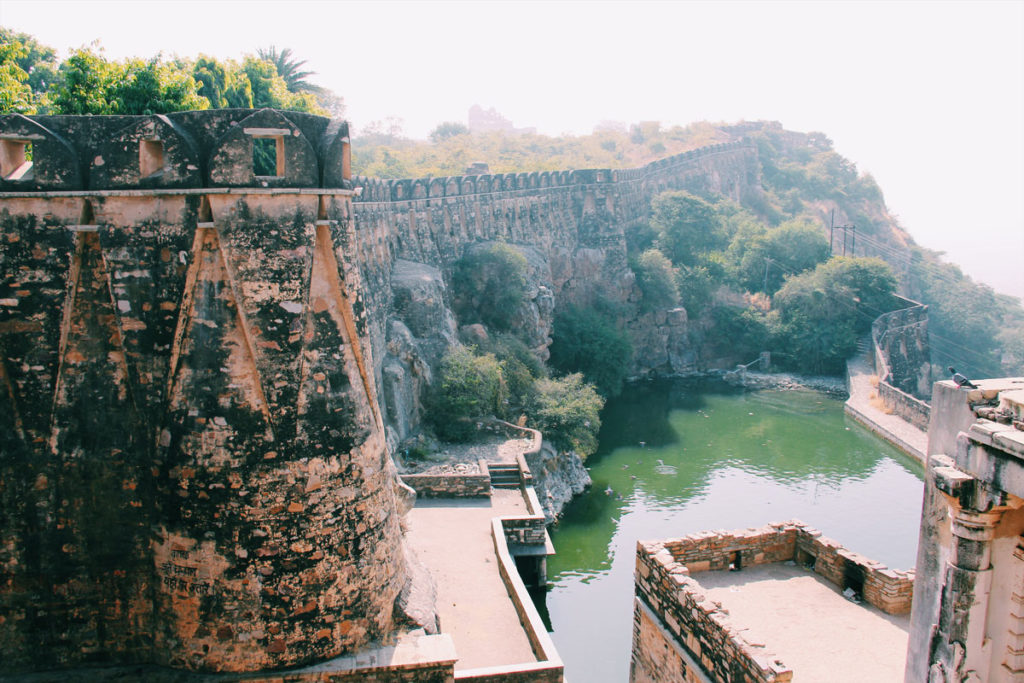
Gaumukh Kund – Chittorgarh
The Chittorgarh fort is situated on the banks of Berach river on a huge expanse of around 700 acres. Built on top of a tall hill, the impregnable fort used its natural surroundings to buttress its defenses.
The fort is one of the greatest forts in Rajasthan and a jewel in the crown of the Rajputana honor.
3 Jauhars were performed at Chittorgarh over a period of 250 years during sieges led by Alauddin Khilji (Padmini in 1303), Bahadur Shah ( Karnavati in 1535) and Akbar (1568).
The fort precinct comprises of a plethora of built structures. Of the 65 structures, 4 are palace complexes, 19 temples and 4 memorials including 2 commemorative towers. The fort is self-sufficient with 22 water bodies (originally 84) that are fed by natural catchment and rainfall. While most temples in the premises are of Hindu faith, the 2 towers – Vijay Stambh and Kirti Stambh are Jain monuments.
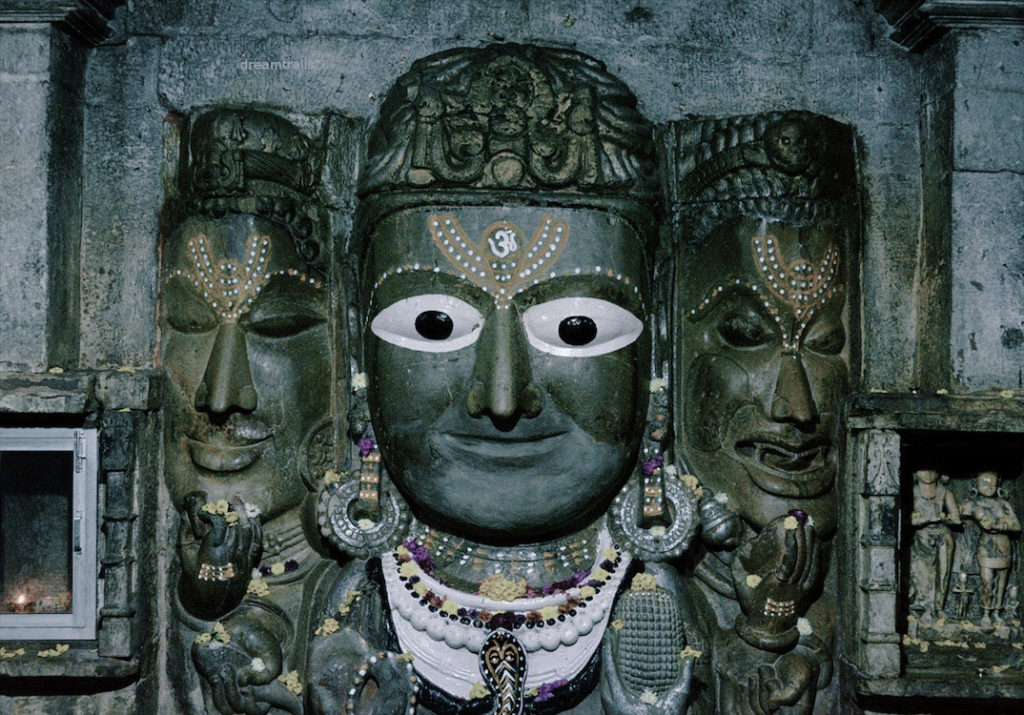
Samadishvara temple – Brahma.
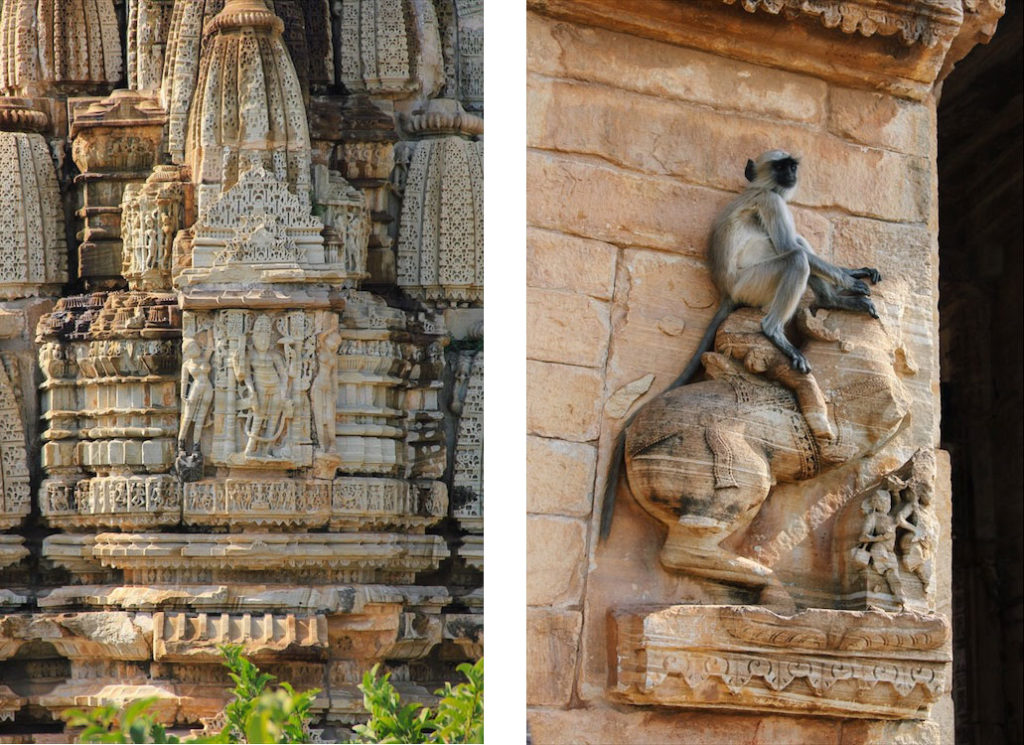
Architecture detail
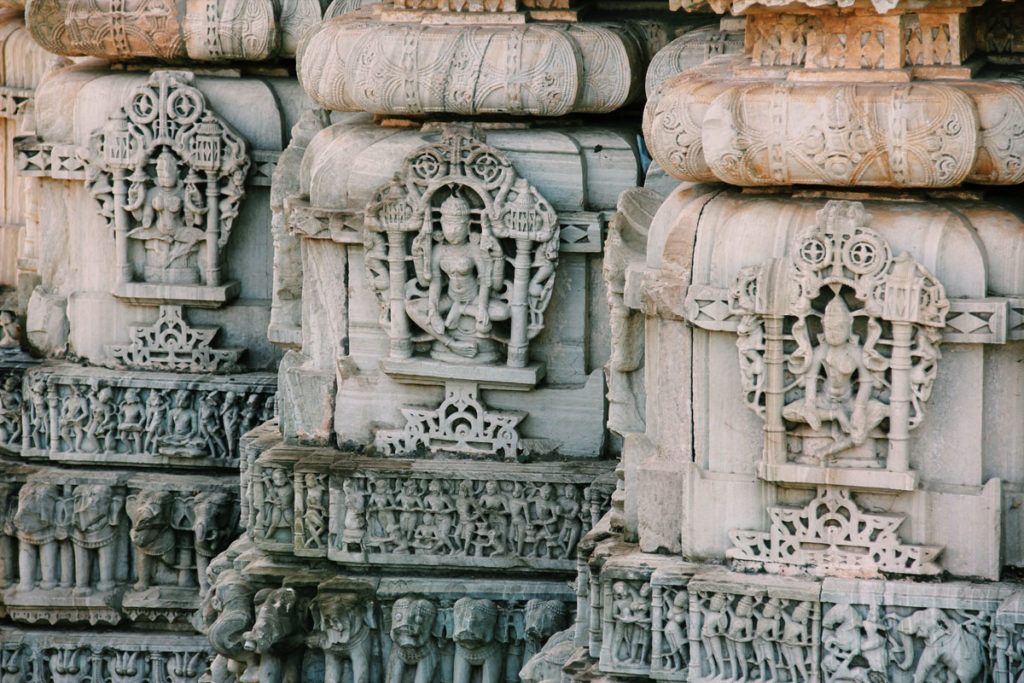
Samadishvara temple Temple detail
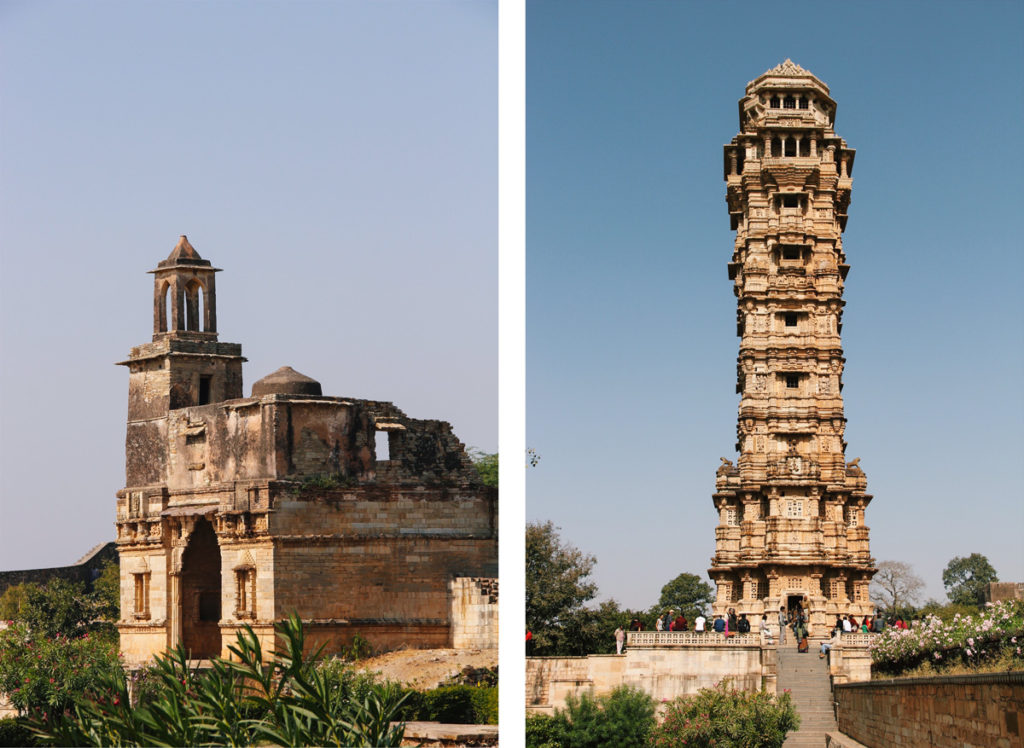
Vijay Stambh
The Vijaya Stambha (Victory tower) is an imposing monument constructed by Rana Kumbha, in 1448 to commemorate his victory over the army of Mahmud Khilji. A steep climb up the steps takes you to the top of the tower. The gallery gives you spectacular views of the entire fort complex and the manicured garden below.
This garden is the location of the Jauhar kund. A low dilapidated platform remains and you can mark the unclear outline of the kund. Most of the structure is now buried beneath the garden. The remaining palace walls that once echoed with painful cries are now weathered stained and crumbling.
Shrill cries still fill the expanse today, but these are from the flocking parrots that have now made homes in the holes of the walls. Troops of monkeys are seen happily gallivanting. It gives you a sense of closure to see nothing but vague remnants of the place.
The austere surroundings evoke a sense of solemn sacrifice.
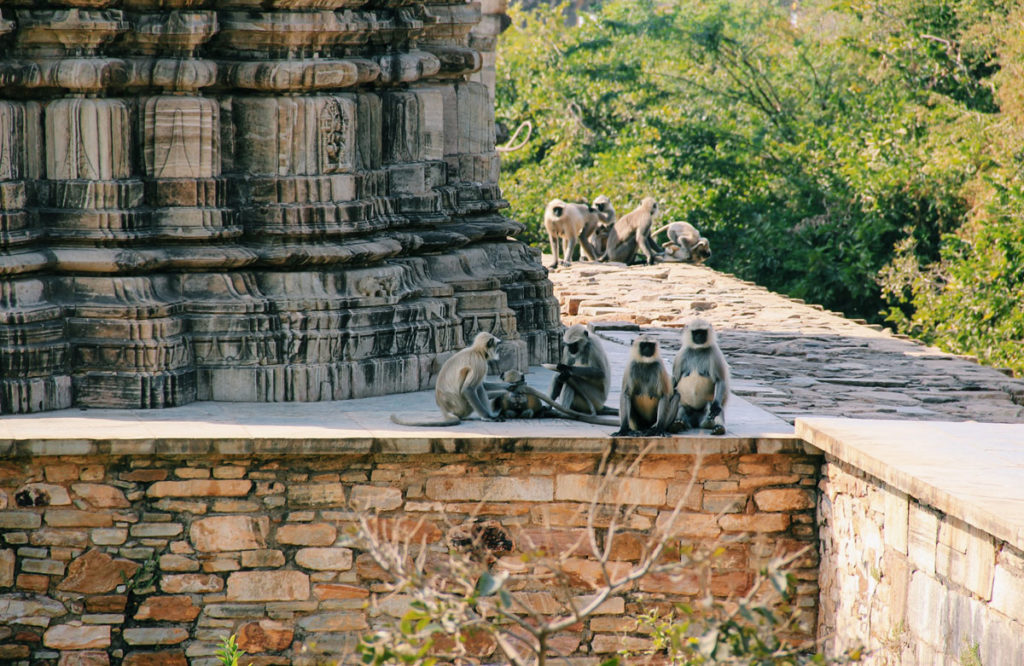
Monkeys near the Jauhar Kund
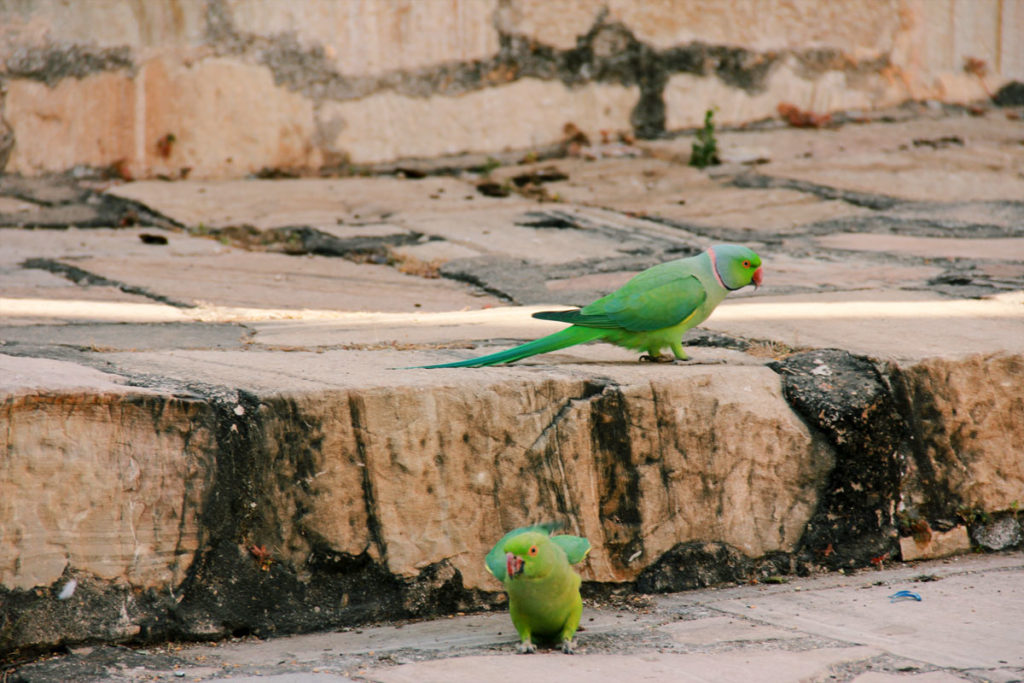
Parrots in the ruins
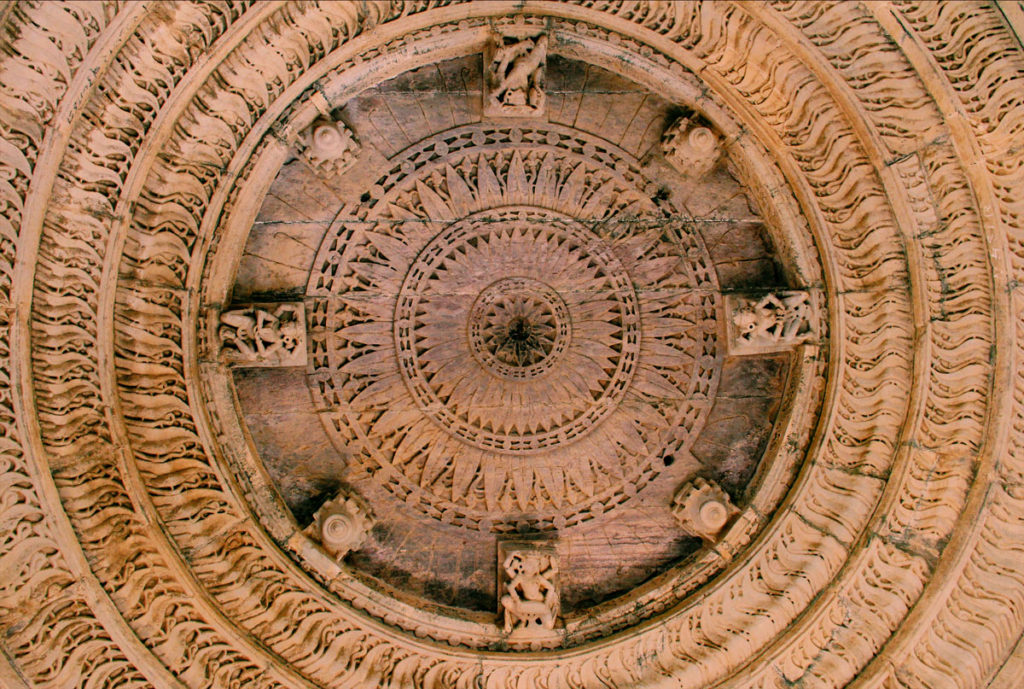
Vijay Stambh ceiling
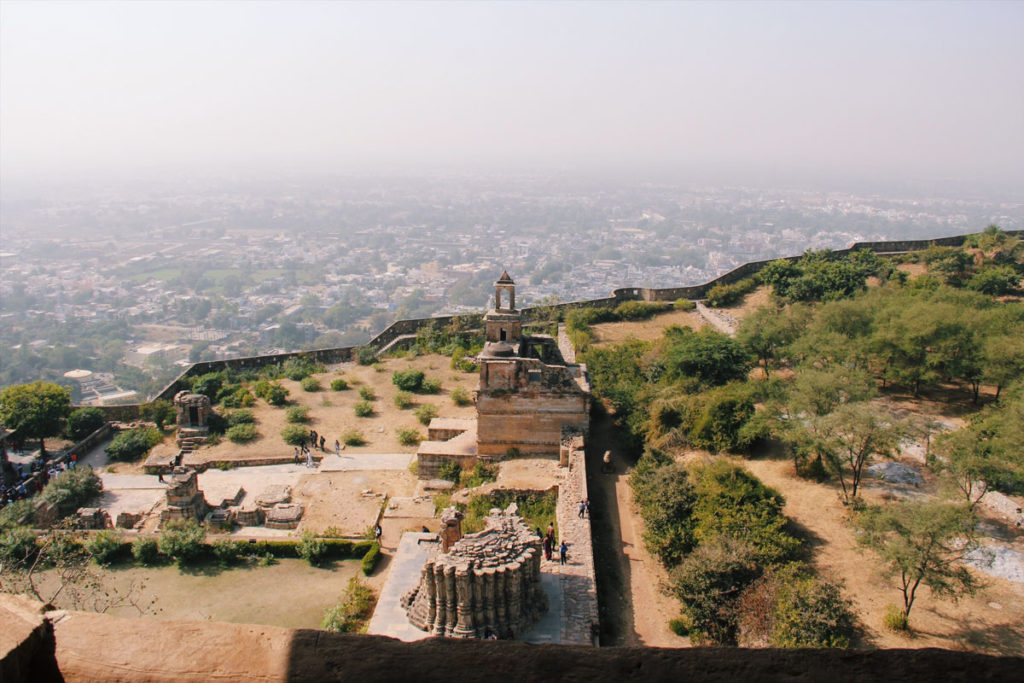
View from Vijay Stambh
I had set out that morning with one purpose – to try and separate history from legend and poetry. But standing here on top of the victory tower looking at the whole picture, I did not want to do it anymore.
The fort is home to approximately 3000 inhabitants today. Right below, the city of Chittor spreads out its arms to meet the horizon. You can see it all from the tower. For countless people, these stories, with all the inaccuracies and mysteries, create a backdrop that gives meaning to their existence.
For now, faith was victorious and I let it have its way!
Our daughter was 1 year old and the other one was not yet born during this visit. I am sure that in the future this account is going to spark several interesting discussions about the definition of sacrifice and gender roles.
Facts check – Wikipedia
![]()



